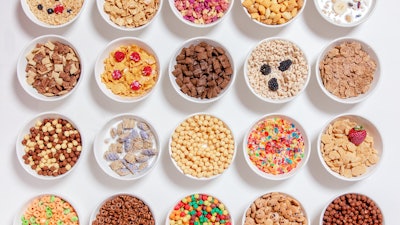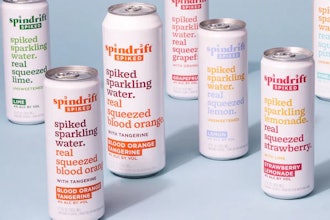
Grab a spoon, a bowl, and your milk of choice, because March 7th, 2022 marks National Cereal Day! Whether you’re someone who starts every morning with a bowl of Corn Flakes, or if you’re more of a late-night snack bowl of Cinnamon Toast Crunch kind of person, there’s no wrong way to celebrate this unofficial holiday.
As for us? Well, we’re going to celebrate the best way we know how, by diving deep into our data to learn more about Americans’ relationship with breakfast cereal. Are there certain times of year where people are more or less likely to buy a box of cereal? Which types are the most popular? And has the pandemic changed demand for cereal?
Pour yourself a bowl and keep reading to find out the answers to these questions and more.
What are the most popular types of breakfast cereals on Amazon?
Everyone has their favorite kind of cereal, but is there a clear winner when it comes to online demand? To discover the king of breakfast, we started with analyzing total online demand in all of 2021 for different types. Here’s what we found:
It was a tight battle for the most popular cereal in 2021, but Cinnamon Toast Crunch just edged out Rice Krispies to claim the crown. Frosted Flakes and Lucky Charms weren’t far behind, either, putting all four of these in a tier of their own.
Honey Nut Cheerios was able to fend off Raisin Bran for the #5 spot, and after that we see another drop to Fruity Pebbles and Special K.
Of course, we couldn’t include every single type of cereal in our analysis, and instead chose to focus on some of the most popular and prominent ones. Of those we did include, Coca Krispies saw the least amount of demand. Count Chocula, which is only widely available around October, was second to last, while Golden Grahams, Wheaties, and French Toast Crunch (a cereal that was brought back thanks to popular demand), round out the bottom five.
Again, don’t worry if your favorite cereal is at the bottom of this list, as there are _many _cereals that would certainly fall below them if we were to include every possible type of breakfast cereal.
Now that we know which cereals are the most popular, let’s take a step back and examine a broader view of breakfast cereals as a category.
When is online demand highest for breakfast cereal?
Is there a specific time of year when breakfast cereal is more or less popular? And what about National Cereal Day? Does it move the needle for demand at all? Let’s start by examining weekly demand for the entire category of “breakfast cereal” last year.
Online demand for breakfast cereal was generally consistent throughout the year, but was highest during January and February. It then fell off during the spring, where it remained consistent throughout the summer and fall, until dropping again during the holidays.
It’s obviously difficult to determine the causes behind these changes in demand. Perhaps the drop in online demand last spring and summer was driven by more people returning to in-person grocery shopping after staying at home to avoid the Delta variant. Or, perhaps January and February simply represent the typical peak for breakfast cereal shopping.
One thing is certain, though: National Cereal Day doesn’t appear to move the needle for online demand for breakfast cereals, as the week of March 7th didn’t bring any special increase in demand.
Let’s look at the change in weekly demand for some of the most popular types of breakfast cereal:
For the most part, the trends for our most popular types of cereal were fairly consistent throughout the year. One notable difference, though, is Lucky Charms: which saw demand rise steadily through February and peaking during March, although this is certainly as a result of St. Patrick’s Day and not National Cereal Day.
Several top cereals saw demand drop to low points in the late spring and early summer, particularly Honey Nut Cheerios, which saw demand fall by as much as 42% compared to the annual average during the first week of June.
Another interesting dip experienced by most of the top cereals was during the week of Thanksgiving, as apparently shoppers are far too busy prioritizing big meal items than a box of Raisin Bran.
Another notable spike: Rice Krispies during the holidays, no doubt the result of millions of Americans looking to bring a big plate of homemade Rice Krispie treats to their holiday party.
Has COVID-19 impacted online demand for breakfast cereal?
From what we’ve seen so far, some cereals are clearly impacted by certain holidays or times of year: Rice Krispies being hugely popular during Christmas, Lucky Charms during St. Patrick’s Day, etc.
But the final thing we wanted to investigate was what kind of impact the COVID-19 pandemic has had on breakfast cereals. To do this, we examined monthly demand over the past three years.
Let’s start by examining breakfast cereal as a category:
Here we see that there was a clear and immediate impact on online demand for breakfast cereal in the first months of the COVID outbreak in March and April 2020. In March, as people across the country began to stock up in preparation for an uncertain length of time spent sheltering in place, online demand shot up by 72% compared to the previous month.
Demand then settled into a more typical flow through the rest of 2020, though staying consistently ahead of 2019’s pre-pandemic figures. 2021, meanwhile, has seen demand match that of 2020’s (except, of course, for March and April).
Here’s a weekly view of 2020 for an even closer look at how those first few weeks of COVID-19 shutdowns impacted online demand for breakfast cereal:
Demand started to spike already during the second week of March, cresting the following week where it was up by more than 100% compared to mid-February. By early May, once most grocery stores had begun to return to normal hours, demand had settled back to pre-shutdown levels.
Which types of cereal got the biggest early COVID boosts?
As people were hurriedly adding boxes of cereal to their Amazon shopping carts during the first months of COVID shutdowns, were they more likely to opt for certain types of cereal than others? Or was it more of a free for all?
Let’s find out.
Every single type of cereal saw an increase in demand during the first week of COVID-19 shutdowns when compared to the month prior, but none more than Honey Nut Cheerios which saw demand surge by a stunning 215%.
Corn Flakes, Raisin Bran, and Frosted Flakes got the next largest bumps, as people were clearly most eager to stock up on the “standard” cereals.
Cinnamon Toast Crunch, which was the most popular type of cereal overall in 2021, still got a sizable increase in demand at 79% but fell much lower on this list than many others.
The lowest increase went to Count Chocula, which was undoubtedly hard for intrepid shoppers to find in mid-March.
Here’s a closer look at the change in weekly demand in 2020 for some of these cereals:
There’s simply no doubt that panic shopping sent demand for several types of cereal skyrocketing during the first weeks of the COVID-19 outbreak. Interestingly, though, it seems that this impact was mostly temporary. Each of the types of cereal in this view saw demand fall to at or below the annual average by May.
A lesson for brands
National Cereal Day might not really move the needle when it comes to online demand for breakfast cereal, but that doesn’t mean that other holidays and events don’t.
Some cereals are closely tied to certain holidays, like Lucky Charms and St. Patrick’s Day, or Rice Krispies and Chex to Christmas. Others, meanwhile, seem to enjoy pretty consistent popularity throughout the year. And the early pandemic shutdowns clearly had people eager to stock up on old favorites like Honey Nut Cheerios and Raisin Bran.
Understanding the factors that influence consumer behavior can help brands better understand how to forecast demand for their products on online marketplaces, and even inform product design and marketing strategy.
To stay up to date on consumer behavior and e-commerce news, info, and trend analyses, be sure to subscribe to Pattern Insights.
This blog was originally posted by Pattern Insights here.






















